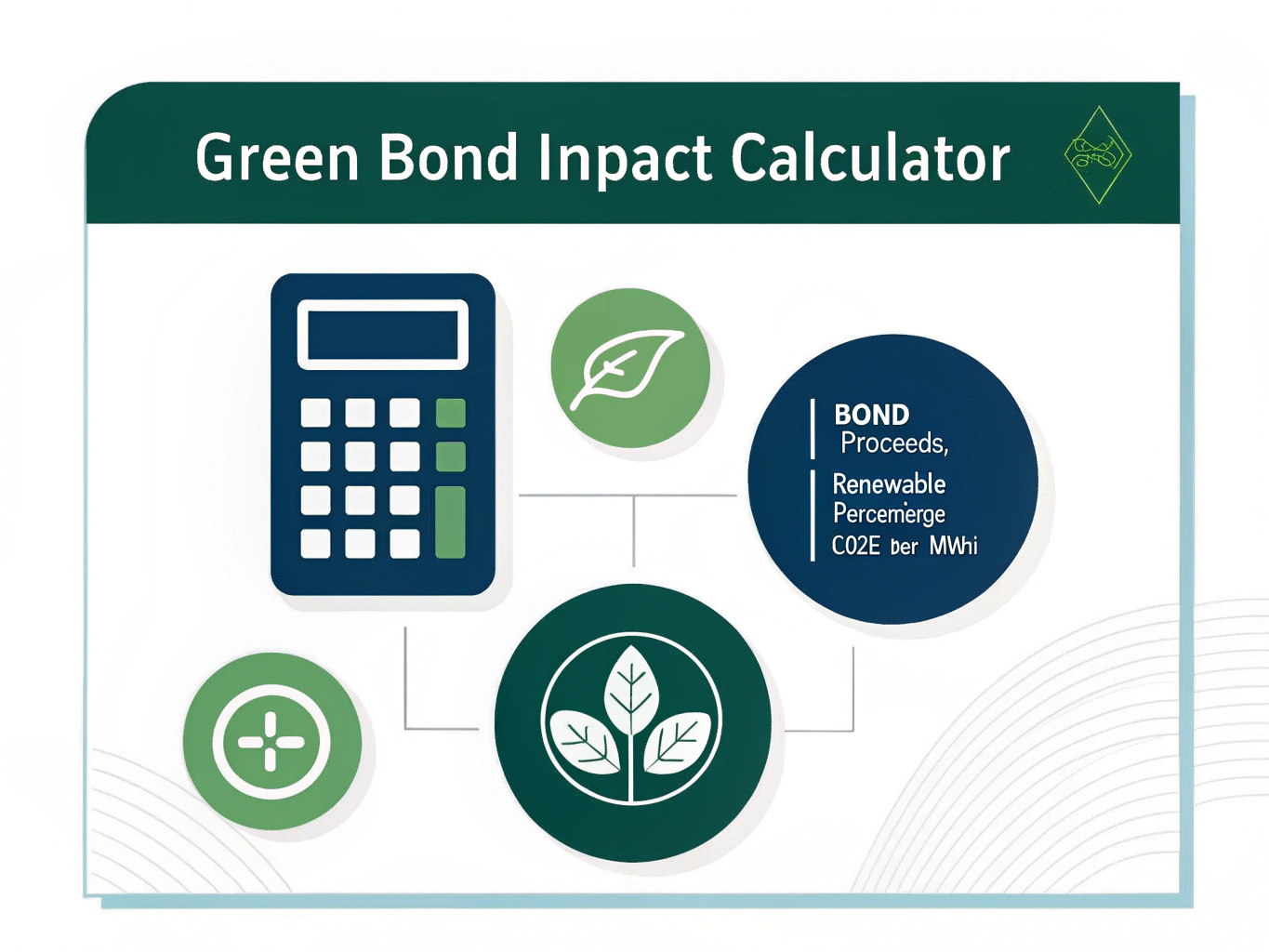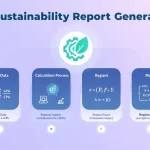Green Bond Impact Calculator
Is this tool helpful?
How to Use the Green Bond Impact Calculator Effectively
To accurately measure the environmental impact of your green bond investments, follow these straightforward steps using the Green Bond Impact Calculator:
- Enter the total Bond Proceeds in USD: For example, you might input 2,500,000 or 15,000,000.
- Input the Renewable Projects Percentage: Specify the portion allocated to renewable sources, such as 60% or 90%.
- Specify the CO2e per MWh value: Provide the carbon dioxide equivalent emissions avoided per megawatt-hour, like 0.58 or 0.72.
- Click “Calculate Impact”: Instantly view the estimated total CO2e avoidance in tons resulting from your green bond.
Introduction to the Green Bond Impact Calculator
The Green Bond Impact Calculator is a practical tool designed to help you assess the carbon footprint reduction achieved through green bond financing. It calculates the total carbon dioxide equivalent (CO2e) emissions avoided by renewable energy projects funded by your bonds.
This calculator follows internationally recognized standards, including the EU Taxonomy for sustainable finance. It provides investors, bond issuers, and sustainability professionals with clear, quantifiable data to support transparent environmental impact reporting and improve decision-making for green investments.
How the Calculation Works
The formula calculates the CO2e avoidance based on the bond proceeds allocated to renewable projects and the associated emissions reduction per unit of energy generated.
Mathematical formula:
$$ \text{CO}_{2}\text{e Avoidance (tons)} = \frac{\text{Bond Proceeds} \times \text{Renewable Projects Percentage} \times \text{CO}_{2}\text{e per MWh}}{100} $$
Key Components Explained
- Bond Proceeds (USD): The total capital raised through the green bond issuance.
- Renewable Projects Percentage (%): The share of bond proceeds directed specifically to renewable energy initiatives.
- CO2e per MWh: Carbon dioxide equivalent emissions avoided for every megawatt-hour generated by renewable energy projects.
Example Calculation Using the Green Bond Impact Calculator
Let’s say you have:
- Bond Proceeds: $30,000,000
- Renewable Projects Percentage: 70%
- CO2e per MWh: 0.55
The estimated CO2e avoidance would be:
$$ \frac{30,000,000 \times 70 \times 0.55}{100} = 11,550,000 \text{ tons of CO}_{2}\text{e avoided} $$
This figure gives you a clear estimate of the carbon reduction impact from the renewable projects funded through your green bonds.
Practical Applications and Use Cases
Municipal Green Bonds
City councils and local authorities use the calculator to:
- Demonstrate the carbon savings from solar panel installations
- Assess wind farm project impacts
- Support hydroelectric energy initiatives
- Evaluate geothermal energy developments
Corporate Green Bonds
Businesses apply the calculator to track impacts of:
- Renewable energy facility construction
- Energy efficiency projects
- Sustainable infrastructure development
- Clean transportation investment programs
Financial Institutions
Banks and investment firms rely on the tool for:
- Accurate portfolio-wide impact measurement
- Green bond impact reporting and compliance
- Meeting ESG disclosure standards
- Improving communication with sustainable investors
Advanced Features and Compliance Considerations
Alignment with EU Taxonomy
- Supports environmental objectives defined by the taxonomy
- Meets technical screening criteria for sustainability
- Incorporates minimum safeguards
- Follows the Do No Significant Harm (DNSH) principle
Best Practices for Impact Reporting
- Conduct regular monitoring and update calculations annually or after major project changes
- Document your methodology transparently for stakeholders
- Engage stakeholders in reviewing impact data and assumptions
- Seek independent verification to improve credibility
Frequently Asked Questions About Green Bond Impact Measurement
What is a green bond?
A green bond is a debt instrument specifically issued to fund climate-friendly and environmental projects. These bonds are backed by the issuer’s assets and finances renewable energy, energy efficiency, and other sustainable initiatives.
Why is CO2e avoidance crucial?
CO2e avoidance quantifies the greenhouse gas emissions reduced as a result of renewable projects. Tracking this helps organizations measure their contributions to climate change mitigation.
How often should I update impact calculations?
Update your calculations annually or whenever there are significant changes in project scope or new emission factor data is available.
Can I use this calculator for different renewable technologies?
Yes. The tool works for solar, wind, hydroelectric, geothermal, and other renewable energy projects, provided you use the correct CO2e per MWh value for each technology.
What determines the CO2e per MWh?
This value reflects the grid emission factor where your project is located and the specific renewable technology’s displacement of fossil fuel emissions.
How does this calculator aid green bond reporting?
It provides a consistent way to measure and communicate the real-world environmental benefits of your green bond investments, supporting transparent reporting to investors and regulators.
What key factors influence the impact calculation?
The size of your bond proceeds, the percentage allocated to renewable projects, and the CO2e avoidance factor per megawatt-hour drive the overall environmental impact.
Does the calculator align with international standards?
Yes. It complies with EU Taxonomy regulations and supports reporting frameworks such as the Green Bond Principles and Climate Bonds Initiative guidelines.
Important Disclaimer
The calculations, results, and content provided by our tools are not guaranteed to be accurate, complete, or reliable. Users are responsible for verifying and interpreting the results. Our content and tools may contain errors, biases, or inconsistencies. Do not enter personal data, sensitive information, or personally identifiable information in our web forms or tools. Such data entry violates our terms of service and may result in unauthorized disclosure to third parties. We reserve the right to save inputs and outputs from our tools for the purposes of error debugging, bias identification, and performance improvement. External companies providing AI models used in our tools may also save and process data in accordance with their own policies. By using our tools, you consent to this data collection and processing. We reserve the right to limit the usage of our tools based on current usability factors.







